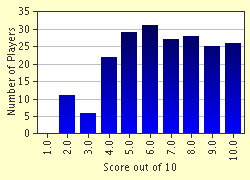Quiz Answer Key and Fun Facts
1. Which station, near to the Victoria & Albert museum and Brompton Oratory, closed in 1934 after a long decline during which a vicious cycle of low passenger numbers and reduced services took its toll? A play was written by Jevan Brandon-Thomas which referred to the tendency of trains to pass through without stopping.
2. South Kentish Town was a station situated on what is now called the Northern Line.
3. What happened to the overground building of St Mary's Whitechapel Road (although the station itself closed years before in 1938)?
4. Why did the Jubilee Line branch of Charing Cross station close in 1999?
5. What two abandoned underground stations are featured in the book and television programme "Neverwhere" written by Neil Gaiman?
6. A station on Aldwych started its life as 'Strand', was renamed in 1915, temporarily closed between 1940-1946 and then closed permanently in 1994. What was it renamed as in 1915?
7. The original terminus of the Metropolitan & St John's Wood Railway opened in 1868, was reduced in importance when Finchley Road station opened, and was finally closed in 1940. Since its closure, Metropolitan Line trains travel directly from Finchley Road to Baker Street. What was the name of this abandoned Metropolitan Line Branch station?
8. A working station used to exist between King's Cross and Caledonian Road on what is now the Piccadilly Line. It was closed in 1932. If you were to go and find the site now, it would be on the corner of Bingfield Lane and York Way. What was the station called?
9. What station, between Golders Green and Hampstead, was partially constructed but then abandoned in the early 20th Century and became known by locals as 'The Bull and Bush' despite the fact that that particular public house was situated at least a quarter of a mile away?
10. Which station was opened east of Tottenham Court Road and west of Chancery Lane, and was the subject of rumours that it was haunted by the ghost of an ancient Egyptian from a nearby exhibition?
Source: Author
Flapjack44
This quiz was reviewed by FunTrivia editor
minch before going online.
Any errors found in FunTrivia content are routinely corrected through our feedback system.

